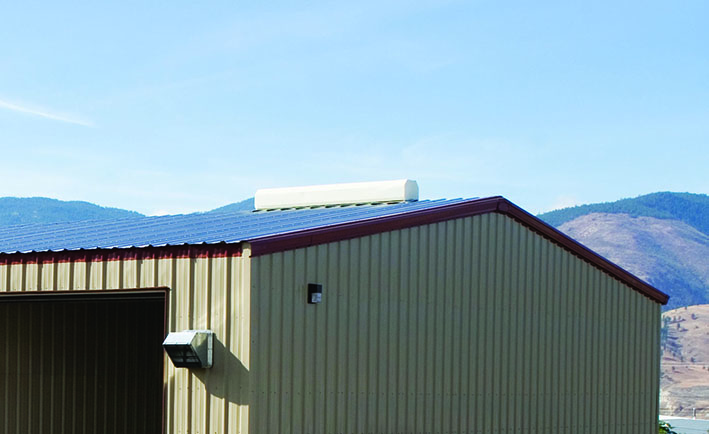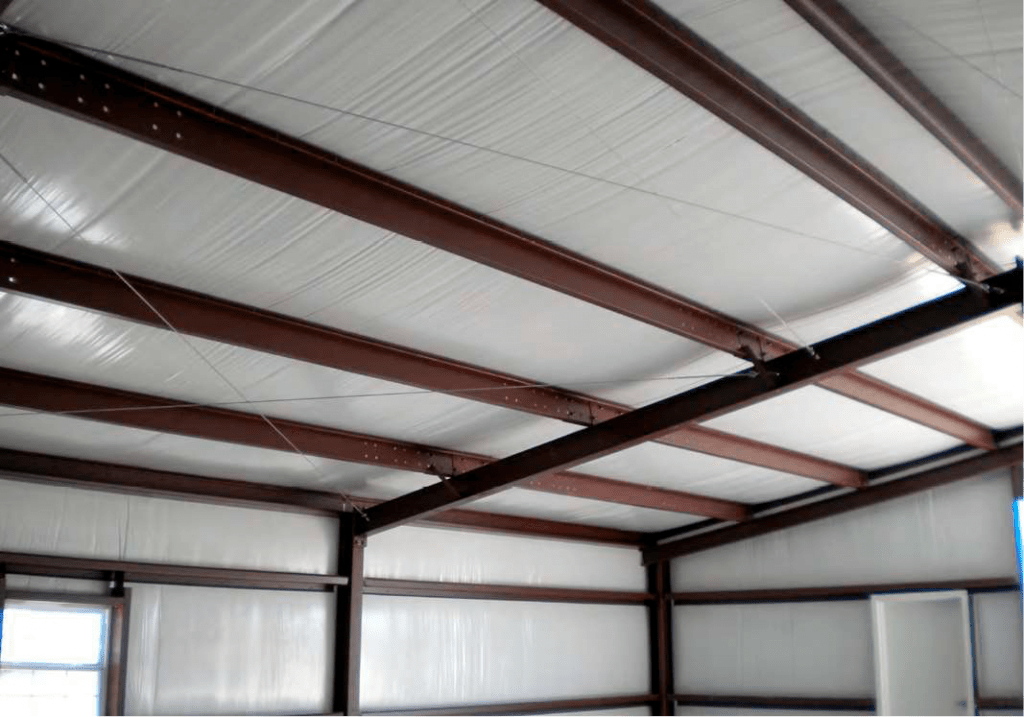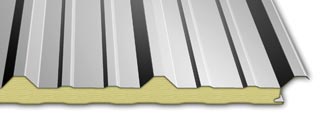After constructing your warehouse, you not only have to decide whether to insulate the building, but you also have to decide what type of insulation you should use. Insulation plays a critical role in maintaining both the value and structural integrity of your steel buildings. Furthermore, most local building codes require that structures have some degree of insulation. There are many types of insulation options available, and the choice can be naturally confusing. Here, we explain the importance of insulation and the most common types of insulation for metal buildings.

Why is Steel Building Insulation Important?
Without insulation, buildings would lose a lot of heat in the winter and store excess heat in the summer. Adding proper insulation stabilizes interior temperatures, increases comfort, and makes the building more energy-efficient. Having energy-efficient buildings, in turn, helps you save money on heating and cooling costs.
Insulation also controls excessive condensation and moisture conditions. Condensation in your warehouse, for example, forms when warm air comes into contact with cool surfaces, such as the metal roof or wall panel. The excess moisture can cause mildew and mold, which can cause health issues and decrease the overall value of the building. Quality insulation has vapor retarder components that prevent condensation on the interior of the building and the insulation itself.
How Do You Measure the Effectiveness of Insulation for Metal Building?
The quality of a building’s insulation is measured using two primary values: R-value and U-value.
The R-value measures the insulation’s resistance to heat transfer. The higher the R-value, the more resistant the insulation is to heat transfer. R-value is standard across manufacturers, meaning that the rating holds the same value across different brands. Most insulation products are required to list the R-value, so it should be easy for you to see which R-value you are purchasing. The R-value that you need will depend on the building structure and the temperature zone of your building’s location. To increase the R-value of your insulation, you can either add more insulation or replace the existing insulation with that of a higher R-value.
In comparison, the U-value is essentially the inverse of the R-value. While the R-value measures insulation’s heat resistance, the U value measures the actual rate of the heat transfer for certain products, such as windows. The lower the U-value, the lower the rate of heat transfer and the better the insulation.
The R-value and U-value are connected, but they slightly differ from each other. The R-value typically measures the effectiveness of a single material, but the U-value describes the overall performance of building systems with multiple materials.
Common Types of Insulation for Metal Buildings
There are many types of insulation available at different price points and functions. Here are some of the most popular types of insulation for metal buildings.
Fiberglass Insulation

Fiberglass is the most common type of insulation material used in residential and commercial projects. In making fiberglass, glass is heated and forced through superfine holes to create microthin glass filaments. Besides insulation needs, manufacturers also use fiberglass for automobile bodies, boat parts, roofing components, and even shower curtains.
As a residential and commercial insulator, fiberglass works by trapping air and reducing heat transfer, which helps keep your buildings warmer in the winter and cooler during the summer.
Fiberglass insulation is typically available in rolls, batts, or loose fill. Batts are the easiest to install because the fiberglass filaments are available as ready-to-install blankets with paper or foil moisture barriers.
Although fiberglass has a lower R-value than other forms of more costly insulation, it is more economical, simple to use, and available in several thicknesses to suit your insulation needs. Furthermore, fiberglass is naturally fire-resistant, making it especially beneficial to those who live in dry, fire-prone regions.
There are some risks associated with fiberglass, however. The particles of fiberglass can be skin, eye, and respiratory irritants. When the superfine particles come into contact with your skin, for example, it can cause swelling, itching, irritation, and rashes. When you inhale fiberglass, the particles can cause coughing, sneezing, nosebleeds, and other respiratory complications. Therefore, you must wear protective clothing and gear such as gloves, eyewear, and masks when working with fiberglass.
Reflective Insulation
While other insulations systems work by reducing heat conductivity in the building, reflective insulation works by reflecting heat away from a building instead. An aluminum-facing barrier reflects 97% of the sun’s heat from a structure, providing your building significant insulation.
Reflective insulation has become increasingly popular over the years for a variety of commercial and residential construction purposes. For starters, aluminum is very recyclable and abundant, making it an extremely cost-efficient choice for insulating trucks, commercial buildings, and other structures. Aluminum is strong, malleable, lightweight, and non-toxic. It is also easy to draw aluminum into wire or thread, making it easier to fabricate than other insulation options. Furthermore, reflective aluminum insulation is fire-resistant and waterproof.
Insulated Metal Panels

Insulated metal panels are wall panel systems that consist of metal skins placed over an insulating foam core. The insulating foam cores are available in various thicknesses to provide the desired R-value for your insulation needs.
Insulated metal panels are more expensive than fiberglass or reflective aluminum, but they also provide superior insulation. Insulated metal panels are ideal for insulating various industrial and commercial structures such as government buildings, warehouses, and manufacturing facilities. They are especially beneficial for a climate-controlled building such as a warehouse that manufactures and distributes perishable goods.
Metal panels are easy to install in one setting, eliminating the need for additional insulation such as fiberglass. Furthermore, metal panels are available in various colors, finishes, and widths to fit your desired look. The metal panels are lightweight, cost-effective, and long-lasting. Furthermore, you can add performance coatings and joint designs to meet hygiene requirements.
Be Proactive With Metal Building Insulation Systems
Providing the proper insulation for your metal buildings is one of the most important investments you will make. Good insulation preserves the value of your building, offers you comfort and safety, and saves you money on energy costs. To learn more about insulating your metal buildings, contact one of our building experts at Allied Steel Buildings today!
